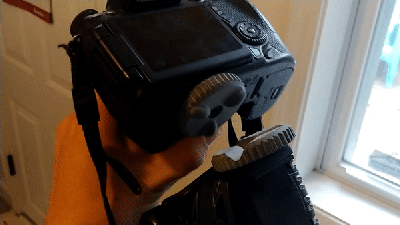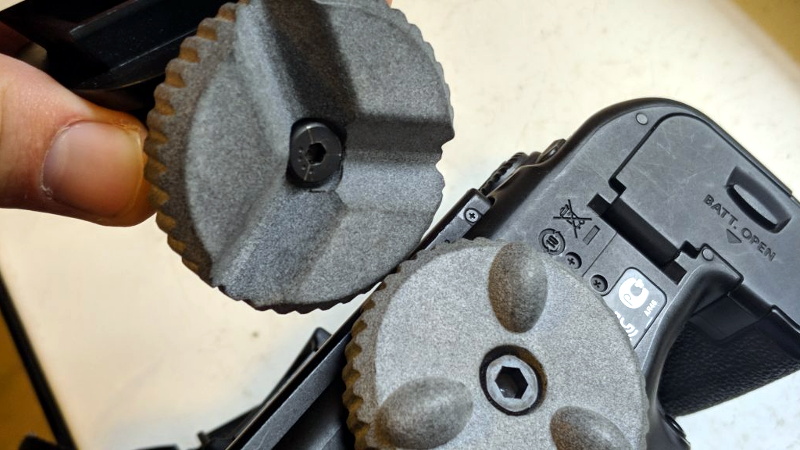[Enginoor] is on a quest. He wants to get into the world of 3D printing, but isn’t content to run off little toys and trinkets. If he’s going to print something, he wants it to be something practical and ideally be something he couldn’t have made quickly and easily with more traditional methods. Accordingly, he’s come out the gate with a fairly strong showing: a magnetic Maxwell kinematic coupling camera mount.
 If you only recognized some of those terms, don’t feel bad. Named for its creator James Clerk Maxwell who came up with the design in 1871, the Maxwell kinematic coupling is self-orienting connection that lends itself to applications that need a positive connection while still being quick and easy to remove. Certainly that sounds like a good way to stick a camera on a tripod to us.
If you only recognized some of those terms, don’t feel bad. Named for its creator James Clerk Maxwell who came up with the design in 1871, the Maxwell kinematic coupling is self-orienting connection that lends itself to applications that need a positive connection while still being quick and easy to remove. Certainly that sounds like a good way to stick a camera on a tripod to us.
But the Maxwell design, which consists of three groves and matching hemispheres, is only half of the equation. It allows [enginoor] to accurately and repeatably line the camera up, but it doesn’t have any holding power of its own. That’s where the magnets come in. By designing pockets into both parts, he was able to install strong magnets in the mating faces. This gives the mount a satisfying “snap” when attaching that he trusts it enough to hold his Canon EOS 70D and lens.
[enginoor] says he could have made the holes a bit tighter for the magnets (thereby skipping the glue he’s using currently), but otherwise his first 3D printed design was a complete success. He sent this one off to Shapeways to be printed, but in the future he’s considering taking the reins himself if he can keep coming up with ideas worth committing to plastic.
Of course we’ve seen plenty of magnetic camera mounts in the past, but we really like the self-aligning aspect of this design. It definitely seems to fit the criterion for something that would otherwise have been difficult to fabricate if not for 3D printing.
















Man i just don’t trust magnets to couple my camera bodies and expensive lenses to stuff. The idea of loosing a 2000$+ lens cause a magnet failed, or got knocked just enough to dismount it just doesn’t work for me. I would totally do this on a smaller cheap camera, like a go pro, or some other action cam. But Not on my SLR’s. (part of the reason being 5-10lbs of camera)
Yeah, I knocked an SLR off a medium range tripod on accident once, there is no way I’m trusting my camera or lenses to magnets!
Agree, but its nice design … what about if one of those halfs had printed nut on the outside that is held there just by some kind of lip, and another one had outside threads. That way you can either just use the magnets or screw it together for better reliable hold. Something like those cheap Aviation Plugs from ebay that are popular for stepper motor connections.
With the coupling restraining sliding movement, you will not be able to remove the camera without significant force if n52 or stronger magnets are used. Your lack of faith disturbs me.
Came here to say that.
I hooked up my raspberry pi to my Canon DSLR for time lapse… about 40 minutes later I heard a strong gust of wind and I looked out to see the camera and tripod had toppled and the camera was on its face. Not sure I want to trust magnets to an expensive camera… but it’s a cool mount nonetheless.
If you have a camera bag, hang it from the center column. of your tripod. Older tripods often have hooks already mounted for doing this. So you can keep your travel weight down but still have an advantage for stability. Beats carrying sand bags around, and helps lower the center of gravity on the setup. This is extra important if your shooting macros in timelapse. (learned this from a professional product photographer)
Not only “older tripods” have hooks on the bottom of the center column; newer ones, specially light carbon fiber tripods, also have it.
More appropriate description – “decent tripods”
Collapsible waterbags take up almost no space, and weight 1kg per litre. A half-dozen of those hanging from the tripod and your camera isn’t going *anywhere*. (Re-usable shopping bags/etc. are also good for outdoor shots, as they can be filled with rocks/sand/etc.)
It seems like this would be a better solution if the bottom or top was a cup shape and the opposing side a cylinder. The cup should be at least 150% as tall as the cylinder is wide. A quick twist would break the magnetic bond due to the cam action of the plates shown, but it wouldn’t be in danger of falling off so easily.
This is a neat idea, but like others, I would be concerned about the possibility of the magnets letting go.
I’d also be concerned about the strong magnets’ influence on the mechanical shutter in the camera.
The point of these couplings is that they constrain the part in all six degrees of freedom. You can remove the part and replace it and (ideally) have it positioned exactly is it was before removal. Strength isn’t as good as a big flat magnet or a clip, but those don’t give the positional accuracy of a kinematic coupling. Different goals.
A friend gave me this awesome Gitzo ball head b/c he didn’t have any adapter plates for them. Calipers, OpenSCAD, 3D printer, done!
I have two different models for two different cameras — the one featured is offset from center just enough to line up the (offcenter) lens/sensor of a small point-and-shoot with the central axis of the ball head, making panoramas come out much nicer. This is the sort of ridiculous personalization/optimization that 3D printing makes possible.
imgur photo of mount
Like many of the commenters, I love the kinetic mount, but would be scared to hold a heavy camera on with magnets. When the magnet gives, and the camera converts its stored potential energy into kinetic energy… well, it’s just not worth the pun.
Yeah, but that offset mount point generally avoids having to unscrew the plate for battery swaps.
I like my Canon point&shooters, but they’re absolute battery suckers and the mount hole is right against the door hinge.